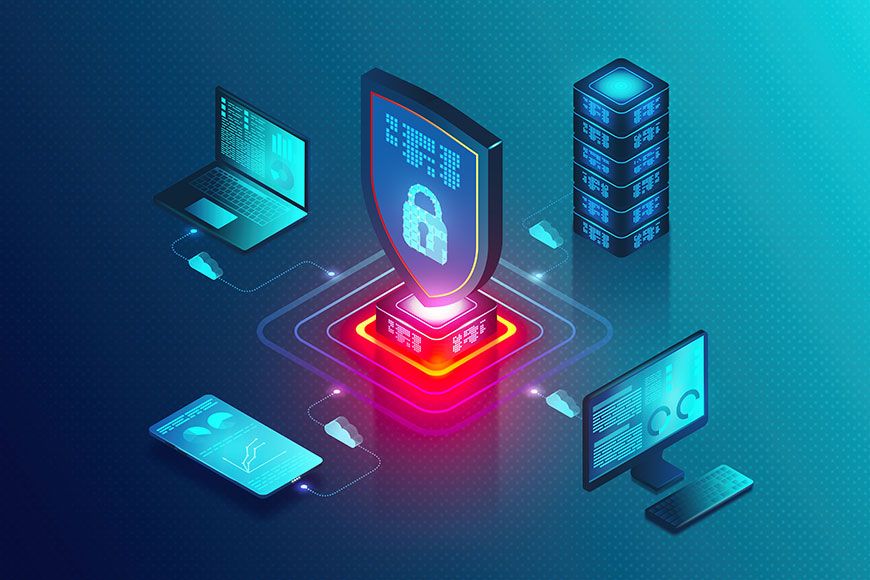A virtual private network or VPN is a secure way to connect to the Internet. It encrypts your web traffic, making it difficult for anyone to track or monitor your online activity. A VPN not only helps protect your privacy when using public Wi-Fi networks but it can also be used to access geo-restricted content or bypass censorship.
Setting up a VPN on different devices and operating systems (OSs) depends on the type of software or app used to connect to the VPN. Most popular OSs, like Windows, macOS, Android, and iOS, come with built-in VPN software that makes it easy to get started. Read our Hotspot Shield VPN review to know about its features in detail and how it is easy to set up on different devices & operating systems.
Best VPNs of 2023
Need help deciding which VPN to choose? We’ve created a handy guide to the best VPNs of 2024.
- ExpressVPN - Best VPN
- NordVPN - Best free VPN
- Private Internet Access - Best for budget-conscious users
- Surfshark VPN - Best in value
- CyberGhost VPN - Best in free VPN trials
- PureVPN - Best VPN for media consumption
- PrivateVPN - Best for high-speed VPN service
- Hotspot Shield - Best malware protection
- Ivacy VPN - Best for online security and privacy
Choosing the right VPN is the first step in ensuring your online security. Different VPNs offer different features, so it is important to conduct extensive research and compare various options to make sure the one you choose meets your needs.
For example, if you want to use a VPN to bypass geo-restrictions on your favorite streaming app, you should check out our list of Best VPNs for Netflix.
Now, if you are a heavy data user who loves to download torrents, then check out our guide on the Best VPNs for Torrenting. This guide is important as not all VPNs are capable of unblocking streaming services or torrenting.
VPN set-up requirements
Before setting up a VPN, here are the things you need to prepare.
- A VPN service provider
- Appropriate credentials (username and password)
- Appropriate software for your device, such as a Windows or Mac desktop app, mobile app, router OS firmware, Chrome/Firefox browser extension, etc.
- Network settings, such as a Domain Name System (DNS) server address and IP addresses for connecting to the VPN server
- Security protocols, such as OpenVPN or L2TP/IPSec to secure your connection
- A secure connection, such as a VPN, or a private network, such as a Local Area Network (LAN)
- Firewall settings to allow VPN traffic through, if necessary
How to set up a VPN on Windows
- Choose a VPN provider.
- Sign up for a VPN subscription.
- Download and install the VPN software.
- Create a VPN account after completing the installation.
- Connect by opening the VPN software and entering your registered username and password.
- Test the VPN connection to make sure that it is working correctly. To do this, visit a website you know is blocked in your country; if you can access the website, the VPN connection is working properly.
How to set up a VPN on Mac
Setting up a VPN on Mac is a straightforward process. Here's how to do it:
- Select a VPN service of your choice.
- Most VPN services provide their users with a dedicated app for macOS. Download and install the app on your Mac by following the instructions provided by the VPN service.
- Launch it by clicking on the app icon in your Applications folder.
- Enter your login credentials provided by the VPN service.
- Choose a server location from the list of available servers provided by the VPN service.
- Depending on your VPN service, you may need to configure some settings to ensure optimal performance.
- Protocol
Choose a VPN protocol that offers the right balance between security and speed. The most common protocols include OpenVPN, IKEv2, and L2TP/IPSec. - Kill switch
Enable the kill switch feature to ensure your Internet connection is automatically cut off if the VPN connection drops. - DNS settings
Configure your DNS settings to use the DNS servers provided by the VPN service to ensure your DNS queries are encrypted.
- Protocol
Once you have configured the settings, you can use the VPN to enjoy unblocked content and Internet anonymity.
How to set up a VPN on iOS
Want to secure browsing on Apple mobile devices? Here are a few steps to use a VPN on iOS.
- Subscribe to a VPN service: First, subscribe to a VPN service provider. Many providers, such as ExpressVPN, NordVPN, and CyberGhost VPN, are available.
- Install the VPN app: Once you have subscribed to a VPN service, you need to download and install the VPN app from the App Store.
- Configure the VPN settings: After installing the VPN app, you need to configure the VPN settings. Here's how to do it:
- Open the “Settings” app on your iOS device.
- Tap on “General.”
- Scroll down and tap on “VPN.”
- Tap on “Add VPN Configuration.”
- Choose the type of VPN you want to configure from IKEv2, IPSec, or L2TP.
- Enter the VPN configuration details provided by your VPN service provider, including the server address, remote ID, and local ID.
- Enter your username and password provided by the VPN service provider.
- Tap on “Done.”
- Now that you have configured the VPN settings, you can connect to the VPN by following these steps:
- Open the “Settings” app on your iOS device.
- Tap on “General.”
- Scroll down and tap on “VPN.”
- Tap on the VPN you just configured.
- Toggle the switch to turn on the VPN.
- Wait for the connection to establish.
How to set up a VPN on Android
Similar to iOS, Android devices have a straightforward way to activate VPNs.
- Download and install a VPN app.
- Open it and sign up for an account. Note that you may need to pay a subscription fee to use the VPN service.
- Select a server location to determine which country’s IP address is used when you connect to the Internet.
- You can select a server location closest to you or one that allows you to access geo-restricted content.
- After choosing a server, you can connect to the VPN by tapping the app's “connect” button.
You can download Android VPN apps from Google Play, follow the instructions on the screen to create a VPN account, and connect.
How to set up a VPN on a router
If you want to protect all the devices on your home network with a VPN, you can set up a VPN on your router. This will encrypt all your traffic, regardless of your device.
To set up a VPN on your router, follow these steps:
- Choose a VPN provider.
- Sign up for a VPN subscription.
- Find out your router's IP address.
- Log in to your router's settings.
- Find the VPN settings in your router's settings.
- Enter the VPN service provider's information into the VPN settings.
- Save the VPN settings.
- Restart your router.
Setting up a VPN on a router can be more complex than setting it up on a single device, and the steps can vary depending on the router and the VPN provider you are using. Some routers have built-in VPN support, while others require installing third-party firmware.
If setting up a VPN on your router yourself seems challenging, you may consider hiring a professional or purchasing a pre-configured VPN router from a reputable vendor. Moreover, setting up a VPN on your router can slow your Internet speeds, so choose a VPN provider and plan optimized for online streaming and gaming if those activities are important to you.
Conclusion
To sum it up, setting up a VPN on different devices and OSs is crucial to ensuring online privacy and security. By encrypting your Internet traffic and hiding your IP address, a VPN can prevent hackers, government agencies, and other prying eyes from accessing your sensitive information.
Setting up a VPN is a straightforward process that can help protect your online privacy and security. By following the guidelines outlined in this article and choosing a reliable VPN service, you can enjoy a secure online experience.


